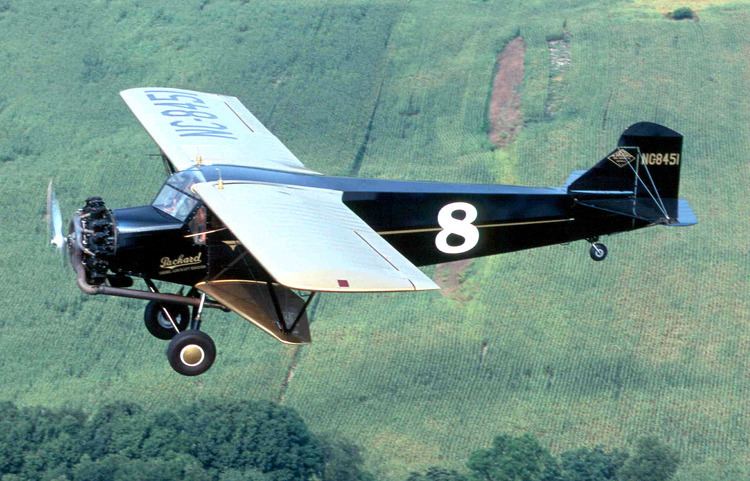Designer Etienne Dormoy | ||
 | ||
Buhl airsedan bull pup
The Buhl AirSedan was a civil utility aircraft manufactured in the United States that holds the first transcontinental non-stop roundtrip flight record in 1929 with the Buhl AirSedan "Spokane Sun-God".
Contents
- Buhl airsedan bull pup
- Buhl airsedan vid1
- Development
- Operational history
- Variants
- Aircraft on display
- Specifications CA 6
- References
Buhl airsedan vid1
Development
The Buhl Airsedan was a civil utility aircraft manufactured in the United States by Buhl Aircraft Company in the late 1920s and early 30s. Later models featured gradually increased seating and larger engines, but all were conventional sesquiplanes with fully enclosed cockpits and passenger cabins.
After Buhl ceased operations, the drawings and jigs were purchased and a small number of CA-6's were built in Canada by the Ontario Provincial Air Service (OPAS) for use as fire spotting aircraft. These differed from the original plans in having more powerful 440 HP Pratt & Whitney engines and Vickers floats.
The prototype CA-3 Airsedan was flown in the 1928 National Air Races, and was purchased in the 1960s by Ed Marquart for restoration. The aircraft was modified for a Lycoming radial engine installation and sold to the Buhl family after his death in 2007. The aircraft was restored to flying condition by Andy Bowman in 2012.
Operational history
One Airsedan, Angelino Jr was piloted by Loren Mendell to first place in the 1929 Oakland-Cleveland Air Derby, and another, Spokane Sun God was used to make the first nonstop roundtrip flight across the United States. Nick Mamer and Art Walker flew it from Spokane, Washington to New York City and back between 15 and 21 August 1929, taking 120 hours 1 minute 40 seconds for the trip and using inflight refuelling to make the distance. Another Airsedan, dubbed Miss Doran, took part in the Dole Air Race but was lost at sea.
Variants
Aircraft on display
Specifications (CA-6)
Data from American Landplane Specifications
General characteristics
Performance
